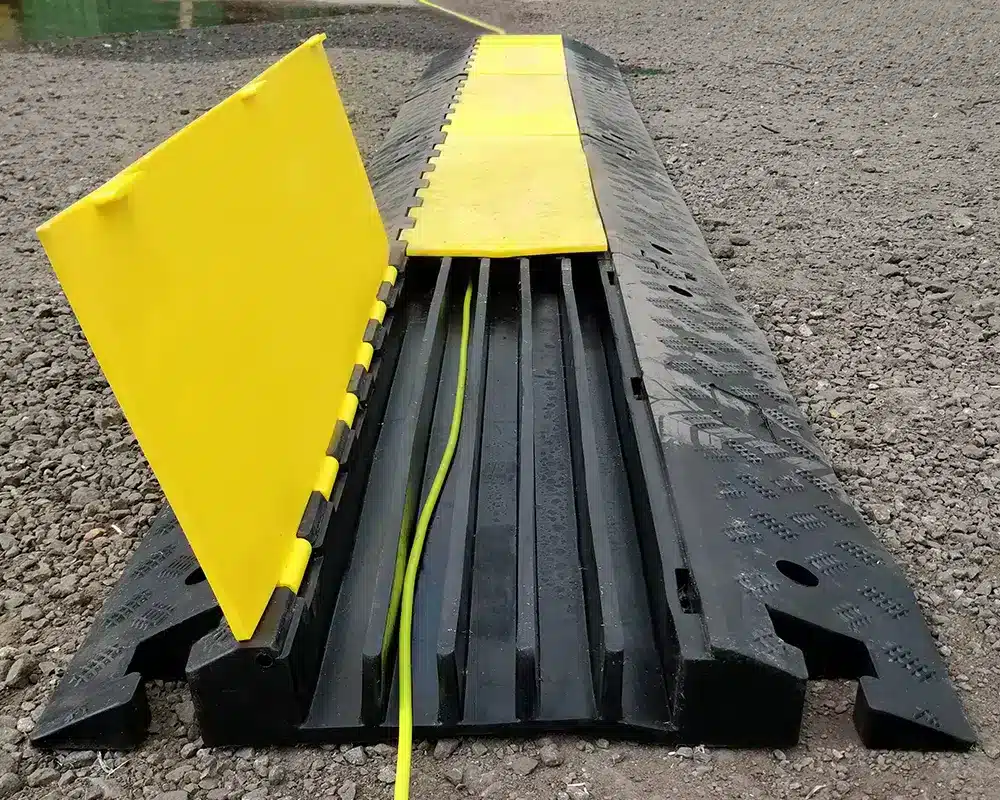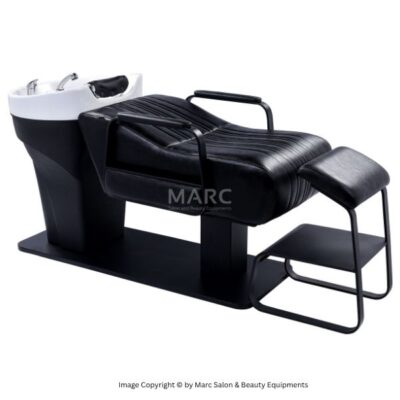Cable ramps are essential tools for protecting and organizing cables, hoses, and wires in high-traffic areas, construction sites, event venues, and industrial settings. They prevent damage to cables while minimizing tripping hazards for pedestrians and ensuring a smooth passage for vehicles. In this guide, we’ll dive into the benefits of cable ramps, explore the different types available, and provide tips for installation and maintenance.
What Are Cable Ramps?
Cable ramps are durable, protective coverings designed to shield cables, hoses, and wires from external damage and keep them organized in busy areas. Made from materials such as rubber or polyurethane, cable ramps prevent cables from being crushed, abraded, or exposed to environmental wear. They are especially useful in areas where vehicles, equipment, or heavy foot traffic may otherwise pose a risk to exposed cables.
Benefits of Using Cable Ramps
Cable ramps offer several advantages, making them a valuable addition to various environments. Here are some of the key benefits:
Protects Cables from Damage
In areas where cables are at risk of being crushed by vehicles, heavy equipment, or foot traffic, cable ramps serve as a protective barrier. They help prevent damage from repeated impact, prolonging the lifespan of cables and reducing the need for costly replacements.
Enhances Safety for Pedestrians and Vehicles
Exposed cables create tripping hazards for pedestrians and can disrupt vehicles if run over. Cable ramps ensure a level, stable surface for people to walk on and for vehicles to drive over, reducing the risk of accidents.
Organizes and Conceals Cables
In settings with multiple cables running through the same space, cable ramps offer a neat, organized solution that conceals them. This not only keeps cables orderly but also contributes to a cleaner, more professional appearance.
Adaptable and Reusable
Cable ramps are easy to install, remove, and relocate, making them ideal for temporary or changing setups, such as at events or construction sites. They can be reused across multiple locations, offering long-term value and flexibility.
Weather and Chemical Resistance
Most cable ramps are made from durable materials that resist wear from weather and chemicals. This makes them suitable for outdoor use and for use in industrial environments where exposure to oils, solvents, or other chemicals is common.
Types of Cable Ramps
There are various types of cable ramps designed to meet specific needs. Here’s a breakdown of the most common types:
1. Light-Duty Cable Ramps
These ramps are typically made from lightweight materials and are suitable for pedestrian traffic or light vehicles like carts or strollers. They’re commonly used in indoor environments, including offices, events, and retail spaces.
2. Heavy-Duty Cable Ramps
Built for industrial use, heavy-duty cable ramps are made from materials such as reinforced rubber or polyurethane. They can withstand heavy equipment, trucks, and high-volume traffic, making them suitable for construction sites, warehouses, and parking areas.
3. Drop-Over Cable Ramps
Drop-over cable ramps are designed to be placed directly over cables that are already laid out. This type is quick to set up, requiring no disconnection or rerouting of cables. Drop-over ramps are ideal for temporary setups and provide a straightforward solution for cable protection.
4. Modular Cable Ramps
Modular cable ramps are customizable, allowing multiple sections to be connected to accommodate long cable runs. They are often used in large event spaces, outdoor festivals, and construction sites, where they can be extended or rearranged as needed.
5. ADA-Compliant Cable Ramps
ADA-compliant cable ramps are designed with accessibility in mind, providing a gentle slope for wheelchairs, strollers, and carts. These ramps are commonly used in public spaces and event venues to ensure that everyone can navigate the area safely.
How to Choose the Right Cable Ramp
Choosing the right cable ramp depends on factors such as the environment, traffic load, and the number of cables that need protection. Here are some points to consider:
- Traffic Load: For areas with heavy vehicle or equipment traffic, select heavy-duty ramps that can withstand significant weight.
- Cable Size and Quantity: Check the specifications to ensure that the ramp can accommodate the diameter and quantity of cables you need to protect.
- Outdoor vs. Indoor Use: If the ramp will be used outdoors, choose one made from weather-resistant materials.
- Temporary vs. Permanent Installation: For temporary setups, look for lightweight, portable ramps that are easy to set up and remove.
Installation Tips for Cable Ramps
Proper installation is essential to ensure that cable ramps perform effectively and provide a safe surface for both pedestrians and vehicles. Here are some general installation steps:
1. Select the Installation Area
Identify the area where the cable ramp will be placed, ensuring it’s clean, dry, and free from obstacles. Make sure the surface is even so that the ramp can sit flat without wobbling.
2. Position the Cable Ramp
Lay out the cables in the designated path, then position the cable ramp over them. For drop-over ramps, you can place the ramp directly over the cables; for modular ramps, connect the segments as needed to create the appropriate length.
3. Secure the Ramp
For added stability, especially in high-traffic areas, consider securing the ramp to the ground. Some cable ramps come with connectors or anchor points that allow you to attach them to the floor, ensuring they stay in place.
4. Test the Ramp
Once installed, test the ramp by walking over it or driving a vehicle over it to ensure it’s stable. Make any necessary adjustments to keep the ramp secure.
5. Add Reflective Tape or Markings
If the cable ramp will be used in low-visibility areas or at night, add reflective tape or markings to enhance visibility. This will help pedestrians and drivers spot the ramp and navigate safely.
Maintenance Tips for Cable Ramps
Maintaining cable ramps is essential to ensure they remain effective and safe. Follow these maintenance tips to prolong their lifespan:
Regular Inspections
Inspect cable ramps regularly for signs of wear, damage, or loose connections. Look for cracks, warping, or compromised sections that may need repair or replacement.
Clean the Surface
Keep the ramps clean by removing any dirt, dust, or debris that accumulates on the surface. This helps maintain visibility and prevents slipping hazards.
Check Cable Placement
Over time, cables can shift within the ramps, especially if the ramps experience heavy traffic. Periodically check to ensure that cables are properly positioned and secured.
Replace Worn or Damaged Sections
If any part of the cable ramp is damaged, replace it promptly to maintain safety. Modular ramps make it easy to replace individual sections, reducing the cost of replacement.
Conclusion
Cable ramps are a practical solution for protecting and organizing cables in high-traffic areas, providing a safe passage for both pedestrians and vehicles. With various types and materials available, it’s easy to find a ramp that fits your specific needs, from heavy-duty options for industrial use to ADA-compliant ramps for accessible spaces. Proper installation and regular maintenance ensure that cable ramps remain effective and help prevent damage to cables, reduce tripping hazards, and keep workspaces organized. Whether for temporary events or permanent setups, cable ramps are a valuable addition to any environment where cables need reliable protection.



